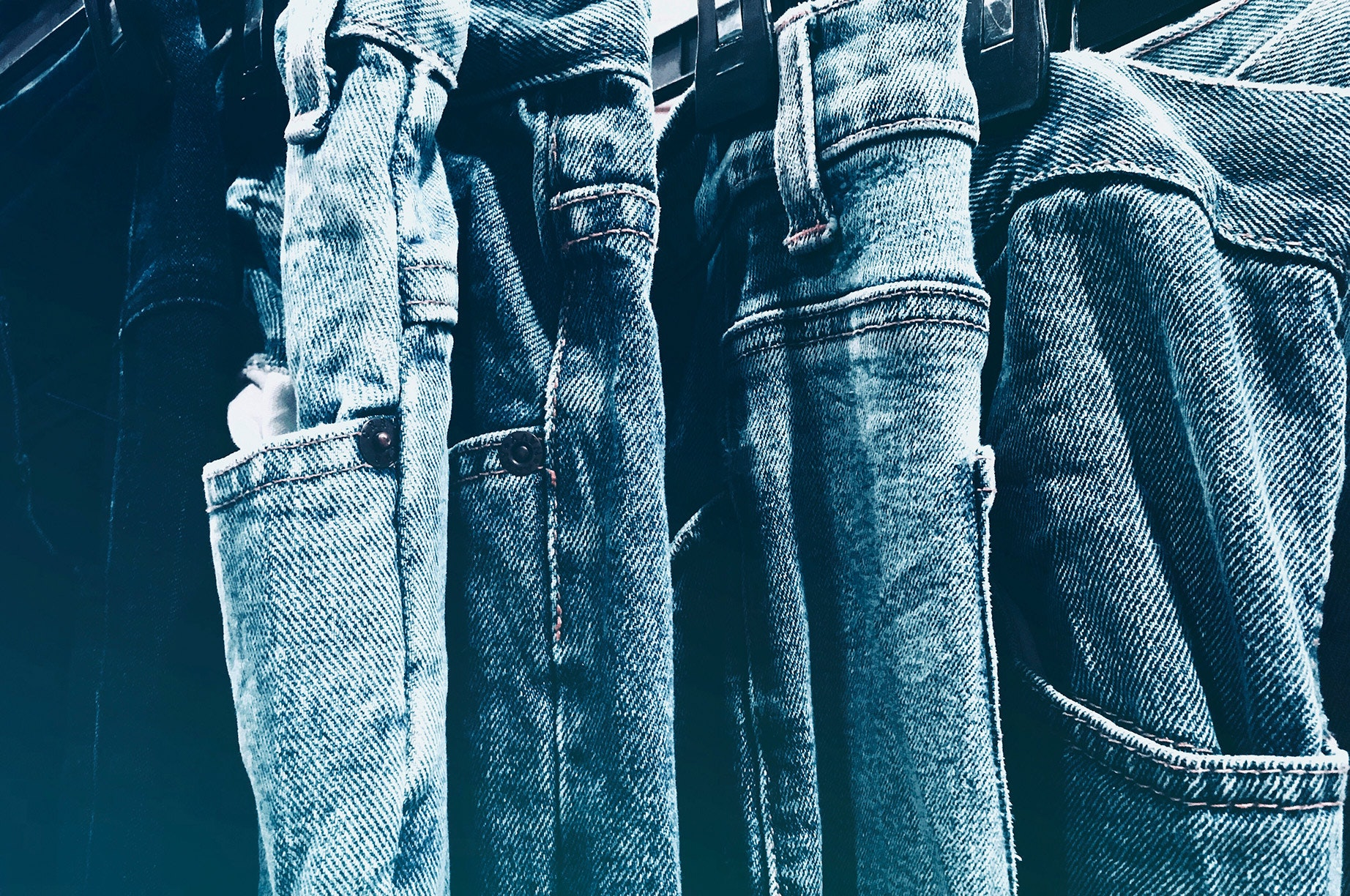

Killing Us Softly with Denim Production
By Jenn Diederich
Jeans: we all love and wear them. They are a staple of our wardrobes and they work for most any occasion. But did you know that there is a darker side to denim? Not only does the process of growing cotton to make denim have a rather high carbon footprint, but the production processes of dyeing and distressing denim are killing rivers and humans alike at alarming rates.
 It takes 1,500 gallons of water to grow the 1.5 lbs. of cotton it takes to make one pair of jeans (Amutha, 2017). And even though cotton is a natural fiber which is better for the environment than synthetics fibers, conventionally grown cotton is one of the most toxic crops in the world: more than 25% of insecticides and 12% of pesticides worldwide are used on cotton crops (Periyasamy & Duraisamy, 2018). These chemicals are harmful to humans, animals, and the natural environment.
It takes 1,500 gallons of water to grow the 1.5 lbs. of cotton it takes to make one pair of jeans (Amutha, 2017). And even though cotton is a natural fiber which is better for the environment than synthetics fibers, conventionally grown cotton is one of the most toxic crops in the world: more than 25% of insecticides and 12% of pesticides worldwide are used on cotton crops (Periyasamy & Duraisamy, 2018). These chemicals are harmful to humans, animals, and the natural environment.
Beyond the issues of water use for cotton crops and pesticides, the denim production process wreaks havoc on rivers and lakes near production facilities. Roughly 70 percent of Asia's rivers and lakes are contaminated by the 2.5 billion gallons of wastewater produced by that continent's textile industry (Webber, 2018). And getting the “distressed” look involves several chemical-intensive washes that leads to heavy metals being deposited into waterways and causing high incidences of cancers, gastric issues and even brain damage for workers in the factories and the people who live nearby (Webber, 2018). In Lesotho, reject pieces of denim from nearby factories get burned in fields and the toxic effluent (blue dye) runs into the water supply (Hammond, 2015) affecting countless organisms.

It is hard to imagine something so seemingly innocent as a pair of jeans as contributing to climate change, the destruction of rivers and ecosystems, and death, but they do. And taking on corporations from a major industry can seem like a daunting task. Don’t get me wrong – they need to be taken on and need to change their practices, but as consumers, there are several individual-level ways we can mitigate some of the problems associated with denim’s high carbon footprint as well:
- Substituting organic fibers for conventionally grown fibers uses less energy for production, has fewer costs, and emits a slightly smaller amount of CO2 gas (Periyasamy & Duraisamy, 2018). Buying denim made from organic cotton can help to reduce water use, pesticide use, and CO2 emissions.
- Laundering denim accounts for roughly half of the greenhouse gas emissions produced (Periyasamy & Duraisamy, 2018) over the lifecycle of a pair of jeans. Washing your denim less frequently and line drying jeans can save a lot of energy and reduce greenhouse gas emissions.
- Repairing torn jeans rather than throwing them away and buying second-hand denim from thrift stores can help to reduce the demand for newly produced denim.
- Pressuring denim manufacturers to clean up their acts: signing petitions, refusing to buy distressed jeans unless they are from a company that makes use of sustainable practices, et cetera can start to make a shift in this industry’s practices.
References
Amutha, K. (2017). Environmental impacts of denim. In Sustainability in Denim (pp. 27-48). Woodhead Publishing.
Hammond, R (2013). The dark side of denim. https://www.robinhammond.co.uk/the-dark-side-of-denim/
Levi Strauss & Co. (2015). The life cycle of a jean: Understanding the environmental impact of a pair of Levi’s 501 jeans. http://levistrauss.com/wp-content/uploads/2015/03/Full-LCA-Results-Deck-FINAL.pdf
Periyasamy, A. P., & Duraisamy, G. (2018). Carbon footprint on denim manufacturing. Handbook of Ecomaterials, 1-18.
Periyasamy, A. P., & Militky, J. (2017). Denim and consumers’ phase of life cycle. In Sustainability in Denim (pp. 257-282). Woodhead Publishing.
Webber, K. (2018). The environmental and human cost of making a pair of jeans. Ecohealth. https://www.ecowatch.com/environmental-cost-jeans-2544519658.html